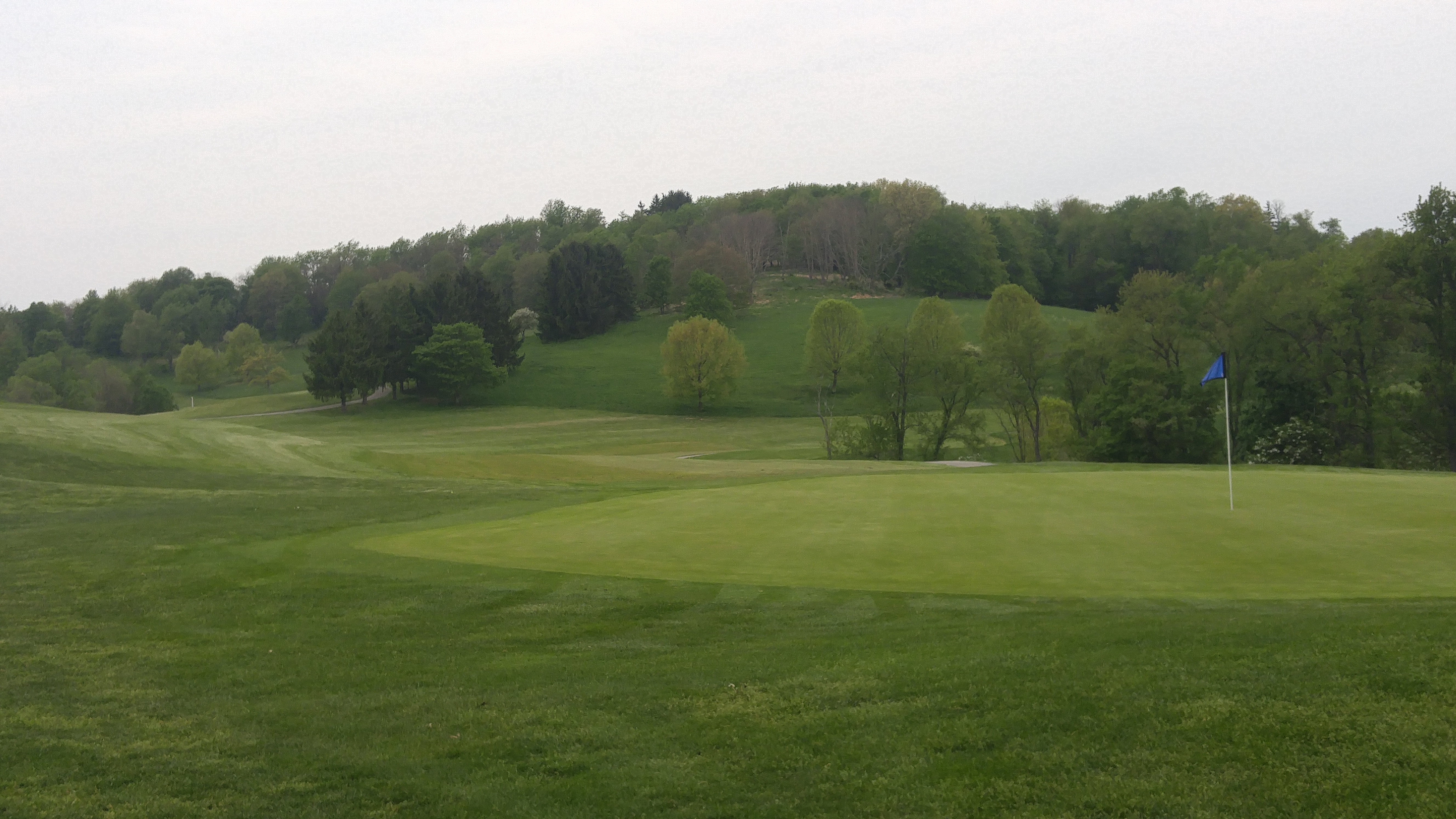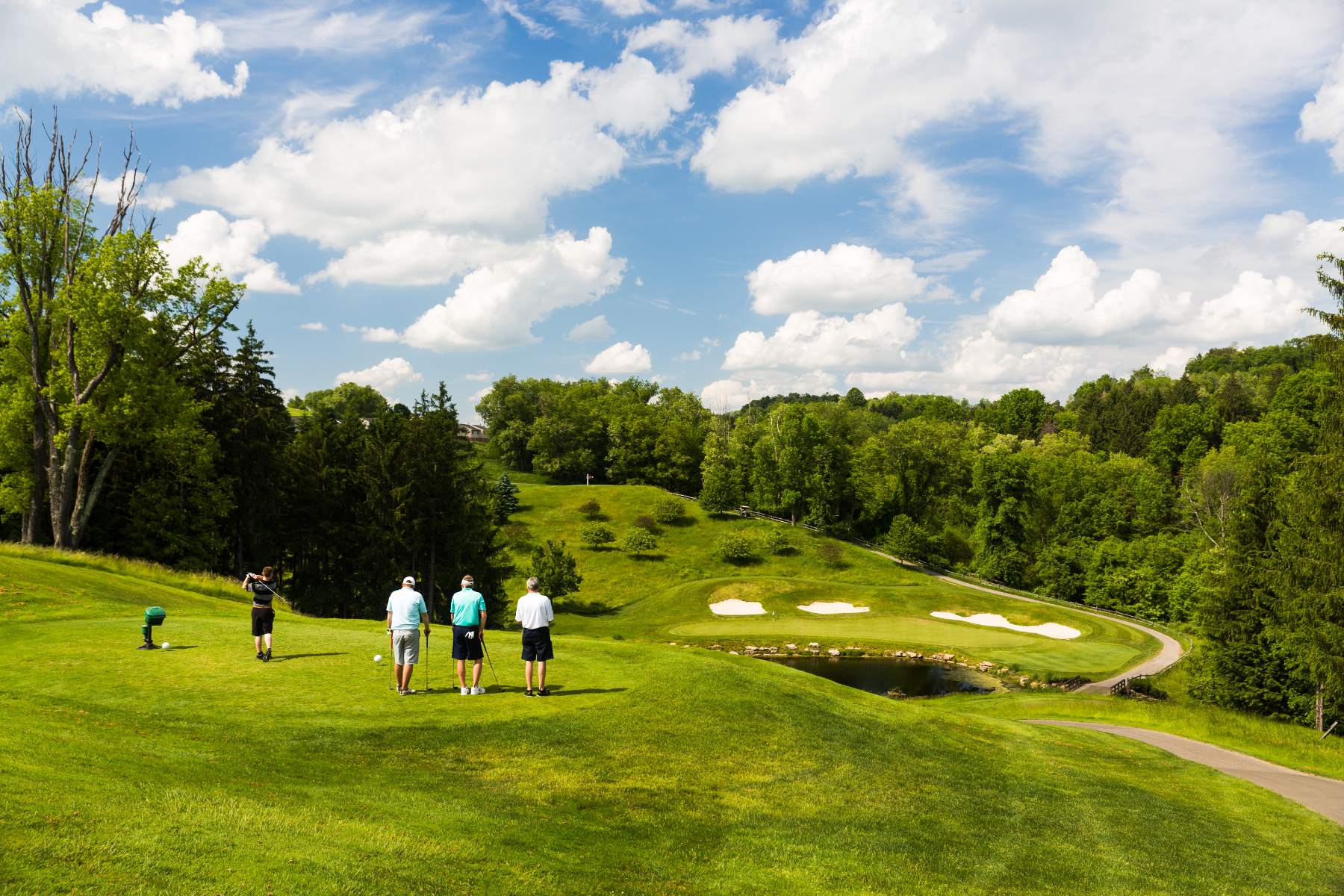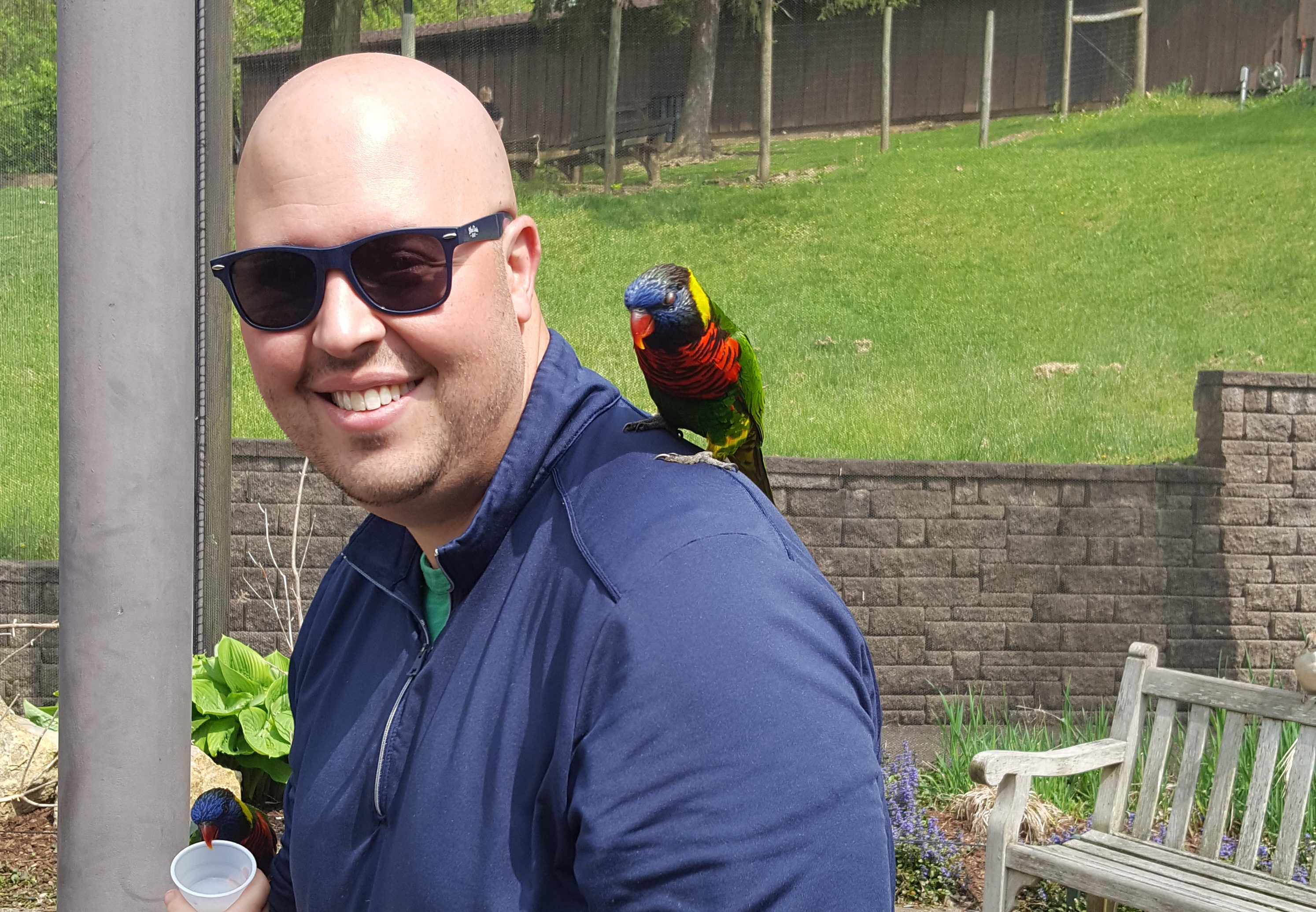The original Jones Course designed by Robert Trent Jones, Sr., opened in 1970 and is representative of a school of thought now somewhat dismissed by a lot of the lauded modern architects. The Jones Course isn't your typical feel-good resort course, requiring the player to hit narrower targets off the tee and hitting to more circular-shaped greens. The course flows well throughout its footprint, but there are a number of shots which will be a significant challenge to any player.
A good example is the par-5 eighth hole, which has a landing area that looks maybe 15 yards wide from the tee. It's practically invisible. Of course, there's more room than that, but the hole can send a developing golfer into a minor panic.
The par-4 14th is a similar scare, with a landing area that seems almost too small despite being a sub-400-yard hole.
Jones wanted golfers to fight through their fear to prove their mettle in executing what he demanded off the tee. The second shots are rather fair, and Jones still sprinkled in plenty of holes where players can run up the score in their favor. The short par-4 10th starts with a tee shot down into an embracing valley as the hole curls to the left, and the player has ample opportunity to be as aggressive as they wish to earn an easy par to start the back. The par-5 15th plays into a smaller target guarded by water, but if the first two shots are played well enough, marking down a 5 should be expected.

The closing hole on the Jones is a fun one, with a Cape-style layout letting a weary player bite off as much as they can with what courage they have left. It's one final big ask from Jones.
On the best of days at Oglebay, you'd play the Jones Course in the morning, grab lunch at the clubhouse grille, and then turn around for an afternoon round on the other course on property.
What would a resort golf club be so close to Western Pennsylvania without some Arnold Palmer influence? That's what guided bringing in Mr. Palmer to complete a 2000 design named after him.
While some of the Palmer Course runs through similar land as the Jones Course, the two experiences could not feel more different. By this time in his career, Palmer hadn't embraced the width of an up-and-coming Hanse, Mike DeVries, Doak or others, but he did embrace diversity in his builds. He didn't want every landing area to feel the same, and he wanted to give golfers unconventional looks off the tee without bewildering them.
The scorecard will grab a player right away with the course's symmetry -- six par 3s, six par 4s and six par 5s. I love par 5s, and I'd play a course with 18 of them if I could, so this makes me happy. Some are short, with demanding second shots to get home. Some are longer, forcing the player to hit two booming shots to earn an eagle try. It's a good mix where there's a danger of monotony.
The par 4s are all reasonable, a variety of lengths and tee-shot demands. There's plenty of width off the tee for any player, and the green complexes give a player lots of room to rack up GIRs and feel good. However, the hole locations can be pinched and tucked to make earning circles on the card challenging.
It's kind of hard to make mountain-golf par 3s feel different. Fundamentally, they either do downhill or uphill, and the severity of that slope plus the carry required is really what makes the hole. The exception here is No. 13, which is a three-club drop from tee box to green. It felt like I was hitting down toward ants on the green when I saw the group in front of me. Frankly, every mountain course should have a hole like this. It's jarring to pretty much all golfers, but it's a fun shock to the system.

The fifth hole is also a solid par 3, playing with a mid- or long iron shot into a green sitting diagonal to the tee box. With guarding bunkers left and room to miss right, a player can take on as much risk as they wish.
The Palmer course wraps up uniquely. Not many courses end on a short par 4, but I enjoyed the experience. It would be great for match play to potentially close out on a hole where anything from 2-6 is possible. Getting to the green on a 330-yard hole isn't all that difficult in two, but the bunkers guarding the way make a player earn their score regardless of their strategy -- going for it or laying up.
The beauty of going to Oglebay to play is you're not going to pay more than an $80 green fee in absolute prime time. If you can't get on the tee until late in the day, you can fly around in short order for under $20 with a twilight rate. That doesn't happen at more upscale resorts.
These three golf courses sit on what amounts to a tiny sliver of the 12,000 acres of land comprising Oglebay Resort. Most of that land was donated over time by benefactors. Unless you go hiking or play especially bad golf while you're there, however, it's not going to feel that massive. But it will feel expansive. It's a relaxing sensation to look around the landscape and know pretty much what you see is your oyster for your stay.
The central area of the resort is the Wilson Lodge, with large, recently renovated hotel rooms offering plenty of space for a comfortable evening. These rooms typically have a fireplace as part of a living area, including a couch. The bathrooms have been refreshed with modern styling and conveniences. The beds are comfy.
There are a few places to eat inside the lodge, including Glassworks Grill, which offers a small-but-tasty menu of sports-bar food. The service is excellent, and the fries are a standout, as is the Western Pa.-styled Cuban, complete with Kielbasa sausage.
Sprinkled around the perimeter of the lodge are separate cottages which offer a more private space with a rustic motif. These cottages are being updated, so make sure to book a Premium model for the latest conveniences. The cottages offer anywhere from two to six bedrooms, making them perfect for buddy trips. Count my father-in-law as one of those buddy-trip patrons, or even a couples-trip patron.
The town of Wheeling is about a five-minute drive, and it offers a little bit of backcountry nightlife. There's also Wheeling Casino for the gambling types.
When you're not playing golf, there's hiking, an adventure course (open only on the weekend), miniature golf and the Good Zoo, which is a pretty amazing value for about $10. You'll see an albino alligator, a sloth, a green snake, kangaroos, a cheetah and you can feed lorikeets, which will make you feel a bit like a pirate. If you've brought your kids along, like my wife and I did, there's plenty to break up the day. The indoor pool is a lovely babysitter.

Oglebay isn't a year-round golf destination. They had some snow in April that threw off their aeration timeline. It can happen in a mountainous environment. However, for my money, Western Pennsylvania and adjacent West Virginia offer some of the best backdrops for golf in the world. The spaces are huge but feel cozy, and the quiet they offer allows a player to truly appreciate what they're experiencing.
If you want to spend a few days away from everything but the shot in front of you, head to Oglebay.
